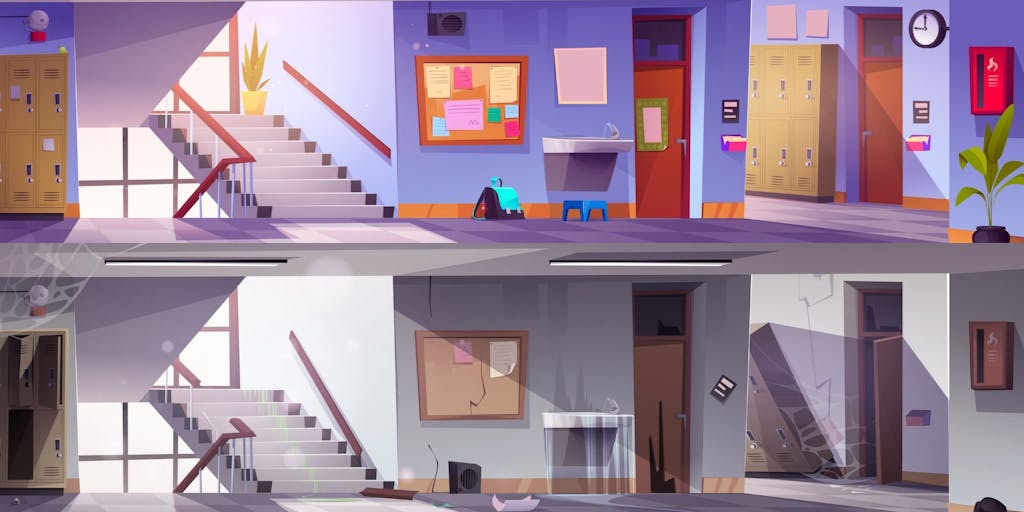How Did School Infrastructure Get So Bad?
Much of the problem with U.S. school infrastructure is simply that it’s old, says Mary Filardo, executive director of 21st Century School Fund, who testified before Philadelphia’s city council last year about the importance of modernizing school buildings.
Buildings that are part of “crumbling” school infrastructure were typically built in the ’70s, and meant to have a lifespan of about 50 years.
“There’s a big push to build something, and then there is seldom the comparable funding on the operating side to appropriately maintain it,” Filardo says.
Filardo points out that schools built 50 years or more ago didn’t factor in the needs of modern teachers and students. They might have classrooms built with only one electrical outlet or kindergarten rooms without in-class bathrooms for those young students. ADA accessibility requirements didn’t exist until the ’90s.
“To the human credit, we’ve learned some things, and so now the standards that we have to meet are different, they’re better, and we can create healthier and more educationally rich environments,” Filardo says. “But we don’t actually have the system there to deliver it that well or support it, so we’re doing catch-up.”
There are also millions more children in schools today than when many school buildings were constructed, Filardo says. That includes not only population growth, but the inclusion of children who used to be kept out of school altogether.
“In many ways, the public schools have taken on child social services,” Filardo says. “So that the social workers, the psychologists, the special education services are now provided in the public schools, and that’s not where it used to happen. Kids were more institutionalized, they were not in school. It was really a different environment.”
Guy Bliesner, president of National Council on School Facilities, says that funding for school buildings has long been a local issue, with occasional support from the state. Many districts saw their student populations growing until the ’80s, and enrollment in rural districts was hit particularly hard as families moved to urban areas.
“Schools that were built to accommodate 200 to 250 students now have 70 students, and they can’t afford the opportunity to rebuild the school because of the cost,” Bliesner says. “So they’re stuck using a facility that was built in the ’50s or ’60s, trying to maintain it in an ongoing fashion, and serve the community that’s there now.”
Brandon T. Payne, executive director of National Council on School Facilities and Bliesner’s colleague, says that school districts generally take on debt when building new facilities, but maintenance has to come from their operating budget. That means if the funds aren’t in the bank, those maintenance needs get deferred. And if the economy is down — i.e. sales or property taxes decrease — that means district budgets will get hit, too.
“We have a significant backlog of deferred maintenance nationally, things that we have put off doing because we had the more pressing need of educating the students,” Payne says.
Another issue is the quality of the structures. Bliesner says that buildings constructed in the ’30s through the ’50s were built with longevity in mind, and quality began to decrease in the ’60s.
“In early education, we built temples to education,” Bliesner says. “Now we build barns to teach in.”


